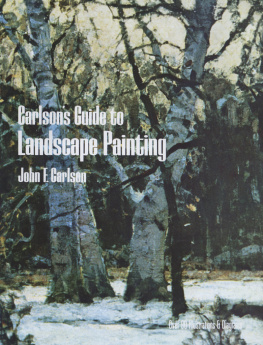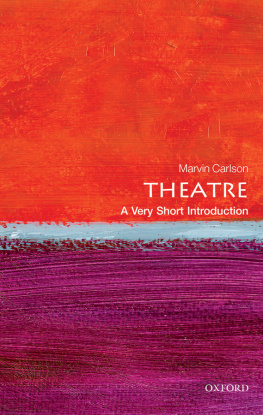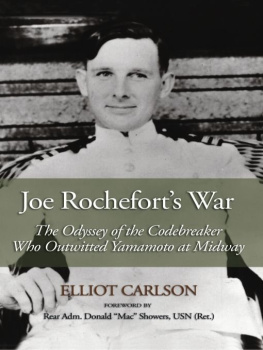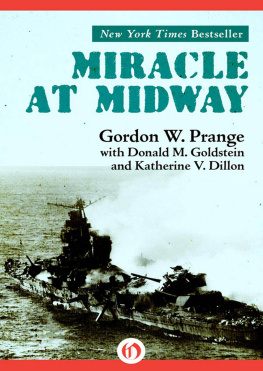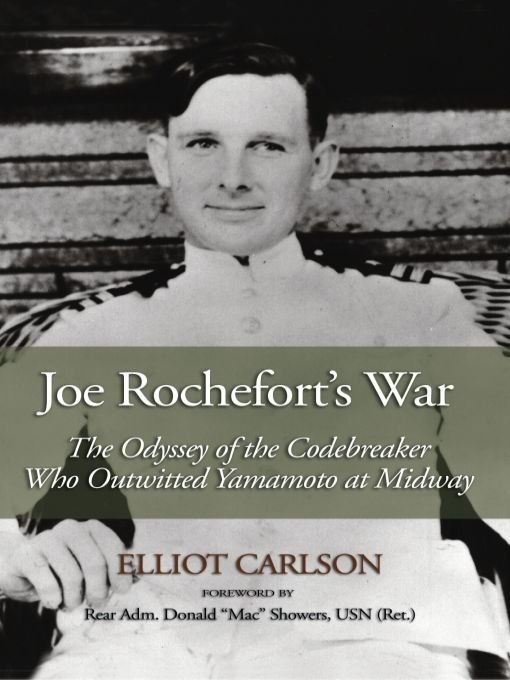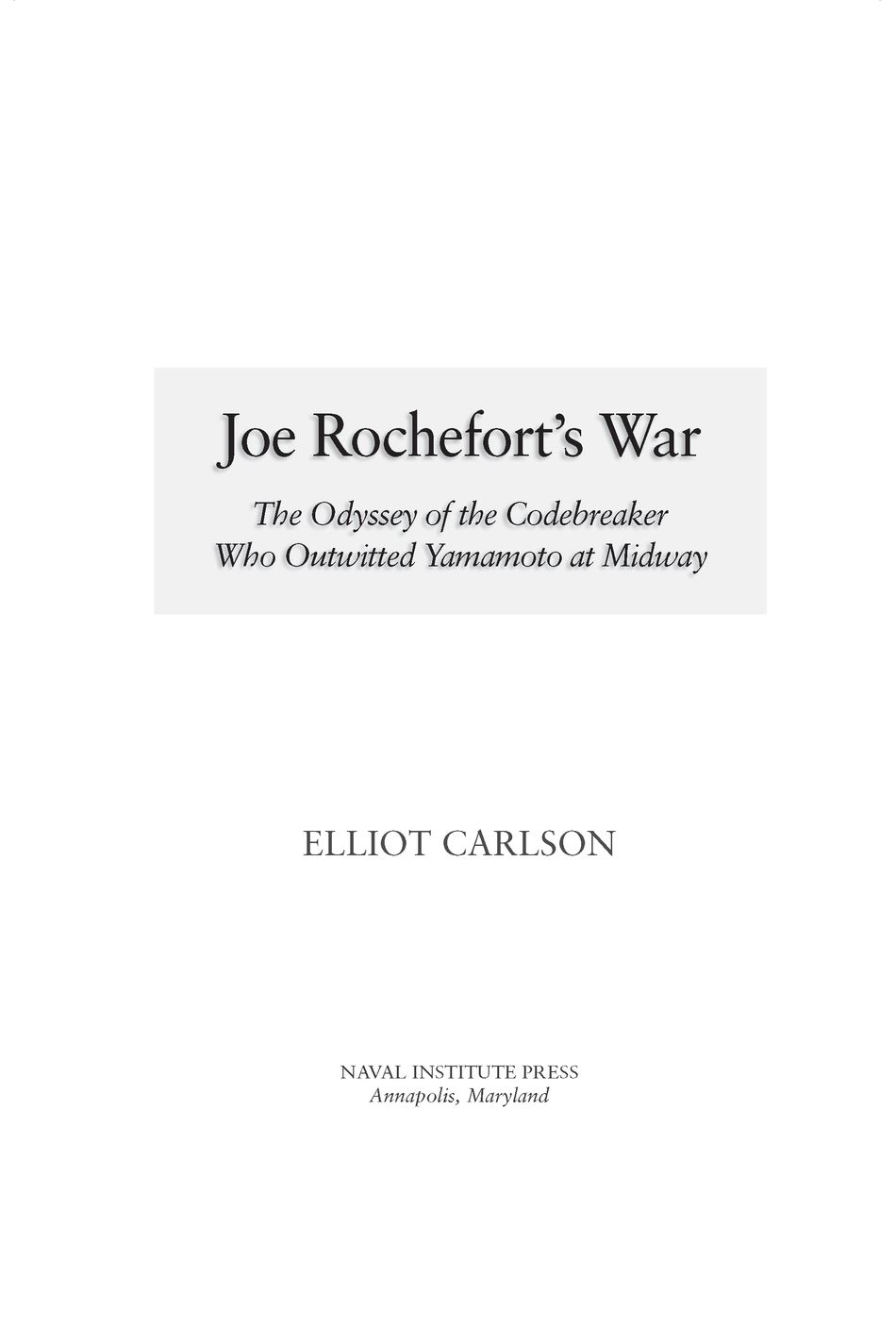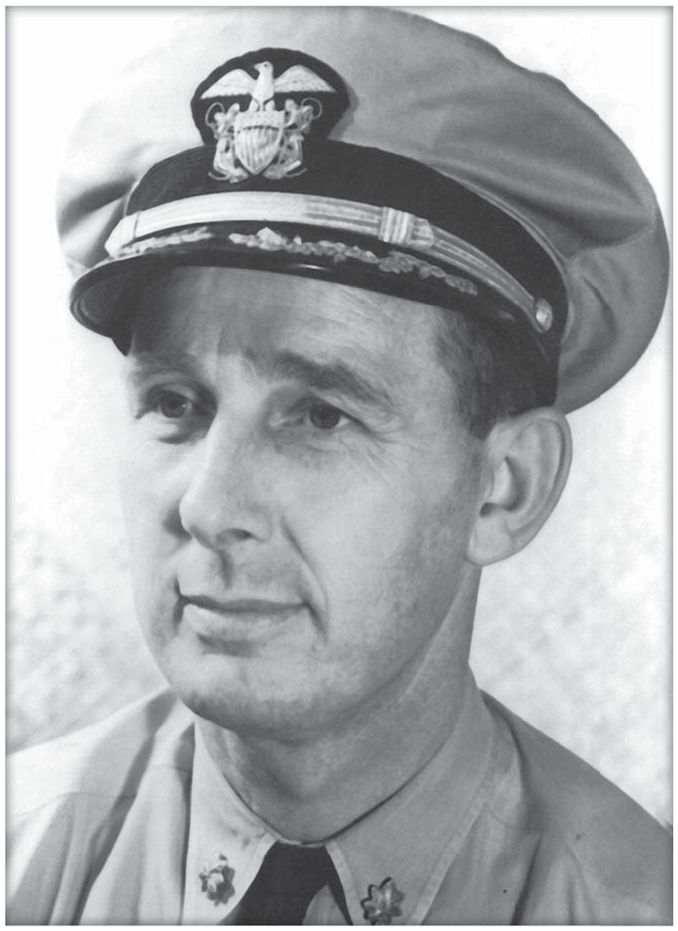Table of Contents
Courtesy Janet Rochefort Elerding
To the officers and men
who served in
Joe Rocheforts basement
To Commander Joe Rochefort must forever go the acclaim for having made more difference, at a more important time, than any other naval officer in history.
Captain Edward L. Beach, USN (Ret.)
The United States Navy: 200 Years
Foreword
This book is an account that is long overdue. Joseph J. Rochefort was a singular player on the world scene in the early months of the Second World War, but his major accomplishments at that time became buried in a cloak of security and unjustified criticism. Chief among his achievements was the crucial role he played in the stunning American victory in the Battle of Midway, although his contribution would remain unappreciated for decades, even after his death.
As a Naval Reserve ensign, I was an analyst assigned to Rocheforts Combat Intelligence Unit (CIU) at Pearl Harbor in February 1942, and I can attest to the validity of both his stellar successes then as well as his occasional questionable actions. Joe Rochefort was a complicated naval officer in a manner that can be properly understood only by looking at his entire life, now revealed for the first time in this book. From humble beginnings, he was attracted to the Navy in the immediate aftermath of World War I. He enlisted at the age of seventeen, thanks to a little imagination regarding his date of birth. His enlisted service demonstrated that he possessed latent intellect and capabilities that ultimately led to an officers commission without the benefit of having graduated from the Naval Academy. As the reader will see, some of that background served to haunt him for much of his career despite his brilliant service to the Navy and the nation.
The highlight of Rocheforts career was his amazing thoroughness in identifying, interpreting, and reporting to Admiral Chester W. Nimitz the Japanese plans to assault and capture Midway Atoll. The enemy saw Midway as the first step in defeating the U.S. fleet and eventually removing the threat of the U.S. naval base at Pearl Harbor. That Rochefort provided such critical intelligence accurately and in time for Admiral Nimitz to organize and deploy a credible defense made the difference between our forces participating in the Battle of Midway and not even knowing that the Japanese were headed there. Clearly Rocheforts work enabled the victory at Midway, but his contribution to the battle, as well as the impact on history of the battle itself, are still being debated today.
Rocheforts detractors outnumbered his supporters, and they held higher positions in the Navys hierarchy, resulting in occasionally unjust treatment as the years and his career progressed. But he never displayed any sense of defeat or disappointment over the consequences of such treatment. His first loyalty was to the Navy, and he accepted his fate as it arose, continuing to carry out his duties with enthusiasm and distinction wherever he was assigned. In all respects he was a leader who was held in high regard by his subordinates. Im honored to have been included among them.
My experiences during that early and critical period of the war are clearly the most memorable of my forty-two years of service to the intelligence arms of the Navy and the federal government. Although my personal contact with Commander Rochefort was limited at the time, I had an opportunity to observe him on a daily basis, plus I was able to learn more about him from his friend and former fleet intelligence officer Edwin Layton. I still regard Rochefort, Layton, and Jasper Holmes, one of Rocheforts top analysts at the CIU, as my primary mentors and the ones who most influenced my decision for a career in naval intelligence.
As you will read toward the end of this book, a great American president cited Rochefort for inclusion among a few who individually made a difference in the outcome of a history-changing battle. That puts him in lofty company, with men like Themistocles at Salamis, Admiral de Grasse in the Chesapeake Bay, and Colonel Joshua Chamberlain at Little Round Top. But Rochefort stands out even among that noble company, for he achieved his triumph without ever firing a shot or even coming within sight of the enemy.
With the long-suppressed facts of his life masterfully revealed on these pages by Elliot Carlson, the full and factual story of Joseph Rochefort can now be known.
REAR ADMIRAL DONALD MAC SHOWERS,
U.S. NAVY (RETIRED)
Acknowledgments
This is a reporters book, and a reporters work is only as good as his sources. For this work I was blessed with extraordinary sourcesmany individuals who provided invaluable assistance during the six years I needed to research and write Joe Rocheforts story. Without their knowledge, goodwill, and selfless aid, this book would never have materialized.
I am indebted first and foremost to Joe Rocheforts daughter, Janet Rochefort Elerding. She invited me into her lovely home in Newport Beach, California, consented to the first of what would be numerous interviews and phone conversations, provided access to Joes service record and few remaining papers, loaned me never-before-seen photos of Joe, and, of incalculable importance, furnished crucial details about her fathers life.
I also benefitted from an interview with another Rochefort family member, Karen Rochefort Ballew, the daughter of Joes son, the late Colonel Joseph Rochefort Jr. and his wife Elinore Mae, of San Diego. Ms. Ballew provided many interesting vignettes about her grandfather.
Of all the individuals interviewed for this book, none was more generous with his time and more unstinting in his support than Rear Admiral Donald M. Mac Showers, one of probably no more than two officers from Rocheforts Station Hypo unit at Pearl Harbor known to be still living. From spring 2004 through summer 2010, Mac granted me more than forty interviews at his Arlington, Virginia, apartment. Our talks covered every conceivable Navy subject, from Joes personality and character to the nitty-gritty of codebreaking.
If Mac transported me into Rocheforts basement hideaway at Pearl circa 1942, Daniel A. Martinez, National Park Service Historian, USS Arizona Memorial, showed me what that room looks like today. In two separate trips to Hawaii, Daniel accorded me grand tours of Pearl Harbor that culminated in Joes basement, now an abandoned storeroom littered with debris. Daniels recollections of meeting Rochefort years earlier as a teenager made an indelible impression on me.
In addition to Mac Showers, I located sixteen other survivors from Rocheforts decrypt and radio intercept units on Oahu and elsewhere in the Pacific during 194142. Captain Forrest R. Tex Biard, now deceased, is well known to many. Several of the enlisted menMike Palchefsky, Ferdinand Johnson, James B. Capron Jr., and Harold Joslinprovided rich portraits of Rocheforts secret space at Pearl and the Navys intercept operations on Oahu and Guam. (A list of the names of these gentlemen can be found in the bibliography under the heading Authors Interviews.)
Philip H. Jacobsen, a onetime enlisted man, took special pains to instruct me in the finer points of codebreaking. Phil served as an intercept operator at Wahiawa in central Oahu (Station H) in the weeks leading up to the Battle of Midway. After retiring in 1969 as a lieutenant commander and an expert in communications intelligence, Phil went on to become one of the leading writers dedicated to rebutting the current crop of revisionist theories concerning Pearl Harbor. During spring 2006 he sent me no fewer than fifty emails explaining arcane aspects of comint. Our meeting at his home in San Diego in late summer 2006, shortly before his death, is a memorable one for me.




